Speed training drills are a crucial aspect of any athlete’s development, regardless of their sport or fitness goals. These drills are designed to improve various aspects of speed, including acceleration, top-end speed, and speed endurance. In this guide, we’ll delve into the world of speed training drills, exploring their types, benefits, progressions, and safety considerations.
We’ll also provide practical tips and resources to help you incorporate these drills into your training regimen effectively.
Whether you’re a seasoned athlete looking to refine your speed or a beginner just starting out, this guide will provide you with the knowledge and tools you need to maximize your speed potential.
Drill Types
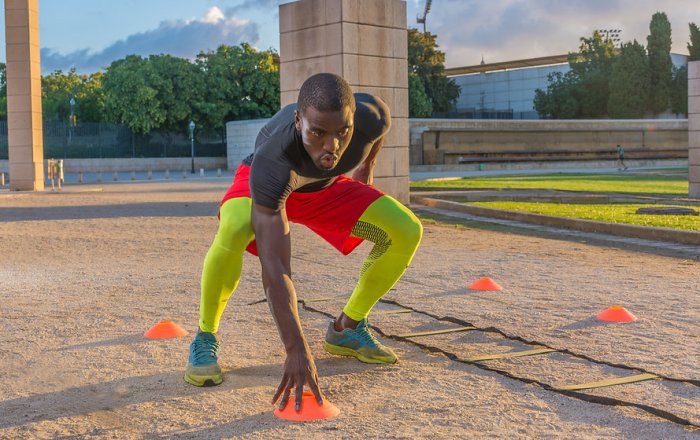
Speed training drills are exercises designed to improve an athlete’s ability to accelerate, maintain top-end speed, and endure repeated sprints. There are several different types of speed training drills, each with its own benefits and limitations.
Acceleration Drills, Speed training drills
Acceleration drills focus on improving an athlete’s ability to accelerate from a standstill or slow speed. These drills typically involve short sprints of 10-30 meters, with a focus on explosiveness and power.
- Examples:Standing start sprints, acceleration drills with resistance bands
- Benefits:Improved acceleration, increased power output
- Limitations:Can be challenging for beginners, may not improve top-end speed
- Sets:3-5 sets
- Repetitions:6-10 repetitions
- Rest:1-2 minutes
- Progression:Gradually increase the distance or resistance
Top-End Speed Drills
Top-end speed drills focus on improving an athlete’s ability to maintain their maximum speed over longer distances. These drills typically involve sprints of 30-60 meters, with a focus on maintaining a high velocity.
- Examples:Flying sprints, hill sprints
- Benefits:Improved top-end speed, increased stride length
- Limitations:Can be fatiguing, may not improve acceleration
- Sets:3-5 sets
- Repetitions:4-8 repetitions
- Rest:2-3 minutes
- Progression:Gradually increase the distance or incline
Speed Endurance Drills
Speed endurance drills focus on improving an athlete’s ability to maintain a high speed over repeated sprints. These drills typically involve multiple sprints of 10-30 meters, with a focus on maintaining form and reducing fatigue.
- Examples:Interval sprints, ladder drills
- Benefits:Improved speed endurance, increased lactate tolerance
- Limitations:Can be fatiguing, may not improve top-end speed
- Sets:3-5 sets
- Repetitions:8-12 repetitions
- Rest:1-2 minutes
- Progression:Gradually increase the number of repetitions or reduce the rest periods
The type of speed training drills an athlete chooses will depend on their individual goals and needs. It is important to incorporate a variety of drills into a training program to improve all aspects of speed.
Drill Variations
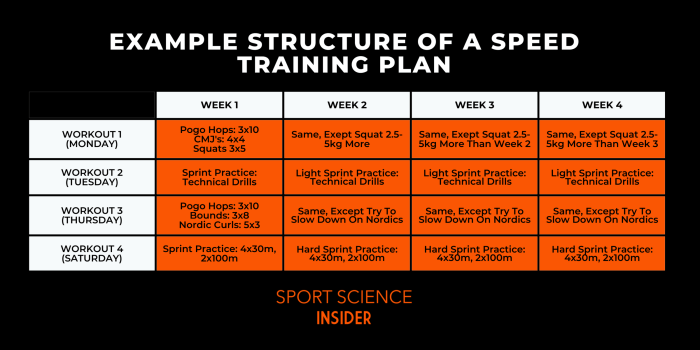
Introducing variety into speed training drills keeps workouts engaging and targets different aspects of speed development. Modifications can be made to cater to varying fitness levels and abilities, ensuring that each individual can progress effectively.
Drill Modifications for Different Fitness Levels
For beginners, start with drills that emphasize proper form and technique. Gradually increase the intensity and complexity as fitness improves. Advanced athletes can incorporate drills that challenge coordination, agility, and power.
Drill Variations for Specific Muscle Groups
- Leg Speed Drills:Focus on developing power and explosiveness in the legs, such as bounding, plyometrics, and hill sprints.
- Arm Speed Drills:Enhance upper body power and speed, including medicine ball throws, kettlebell swings, and resistance band exercises.
- Core Speed Drills:Improve rotational speed and stability, incorporating exercises like Russian twists, side planks, and medicine ball slams.
Drill Variations for Movement Patterns
- Linear Speed Drills:Train straight-line acceleration and top-end speed, such as sprints, flying sprints, and resisted sprints.
- Multi-Directional Speed Drills:Develop agility and quick changes of direction, including cone drills, ladder drills, and shuttle runs.
- Reactive Speed Drills:Improve reaction time and response to external stimuli, using drills like starts from various positions and target drills.
Drill Safety

Speed training drills demand physical exertion, making it crucial to prioritize safety measures. These drills involve intense movements that can strain muscles and joints if not executed correctly. Therefore, proper warm-up, cool-down, and adherence to safety guidelines are essential to minimize the risk of injuries and maximize the benefits of speed training.
Proper Warm-up and Cool-down
A thorough warm-up prepares the body for the strenuous activity ahead. It gradually increases heart rate and body temperature, enhancing blood flow to the muscles and improving their flexibility. This reduces the likelihood of muscle strains and other injuries during drills.
Similarly, a proper cool-down helps the body recover by gradually decreasing heart rate and body temperature, promoting blood flow and reducing muscle soreness.
Using Proper Form and Technique
Correct form and technique are paramount in speed training drills. Incorrect form can put excessive stress on muscles, joints, and tendons, increasing the risk of injuries. It’s essential to maintain proper body alignment, posture, and movement patterns throughout the drills.
This ensures optimal muscle activation and reduces the strain on supporting structures.
Avoiding Overtraining
Overtraining occurs when excessive training volume or intensity is applied without adequate rest and recovery. This can lead to persistent muscle soreness, fatigue, decreased performance, and an increased risk of injuries. It’s crucial to listen to your body and rest when needed to prevent overtraining and its negative consequences.
Signs and Symptoms of Overtraining
Recognizing the signs and symptoms of overtraining is essential for preventing it. These may include:
- Persistent muscle soreness
- Fatigue and decreased performance
- Increased risk of injury
- Difficulty sleeping
- Loss of appetite
- Mood changes
Key Safety Guidelines for Drill Training
To ensure safety during speed training drills, adhere to the following guidelines:
| Safety Guideline | Explanation |
|---|---|
| Warm-up | Gradually increase heart rate and body temperature before drills to prepare muscles for activity. |
| Cool-down | Gradually decrease heart rate and body temperature after drills to aid recovery and reduce muscle soreness. |
| Proper form | Use correct body mechanics and technique to minimize strain and risk of injury. |
| Avoid overtraining | Listen to your body and rest when needed to prevent injury and burnout. |
Drill Applications
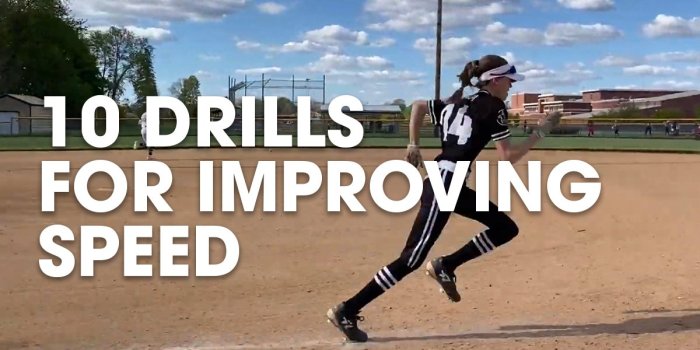
Speed training drills can significantly enhance performance in various sports and athletic activities. They improve acceleration, maximum velocity, and agility, crucial for success in sports like sprinting, football, basketball, and soccer.Drills can be tailored to specific sports or fitness goals.
For example, a basketball player might focus on drills that improve lateral speed and quick changes of direction, while a sprinter would emphasize drills that develop maximum velocity.Numerous athletes have witnessed significant improvements in their speed through drills. Olympic sprinter Usain Bolt credits his success to a rigorous training regimen that included drills designed to enhance his acceleration and top-end speed.
Drill Evaluation: Speed Training Drills
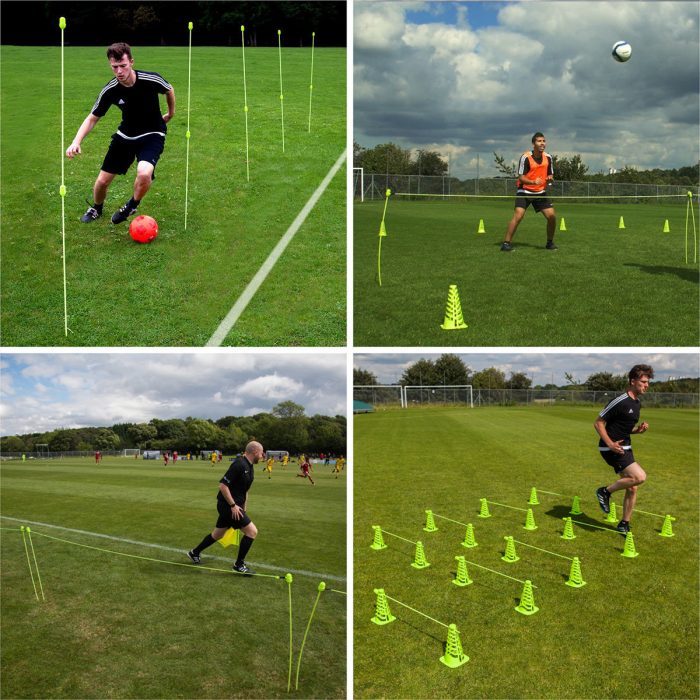
Evaluating the effectiveness of speed training drills is crucial to optimize training programs and track athlete progress. By combining objective and subjective measures, coaches can gain a comprehensive understanding of drill effectiveness and identify areas for improvement.
Performance Metrics
Objective performance metrics provide quantifiable data on speed improvements. Common metrics include:
- Sprint times: Measured over specific distances, such as 10 or 40 yards, to assess acceleration and top speed.
- Jump height: Vertical jump tests measure explosive power, a key component of speed.
- Change of direction speed: Agility drills involving quick direction changes evaluate lateral movement and reaction time.
Subjective Feedback
Athletes’ subjective feedback can provide valuable insights into drill effectiveness. Factors to consider include:
- Perceived exertion: Athletes’ self-reported level of effort during drills.
- Technique improvement: Feedback on whether drills helped improve movement patterns and technique.
- Confidence: Athletes’ perception of their speed and ability after completing drills.
Drill Evaluation Checklist
A comprehensive drill evaluation checklist captures both quantitative and qualitative data. It should include:
- Drill name and description
- Performance metrics (e.g., sprint times, jump height)
- Subjective feedback (e.g., perceived exertion, technique improvement)
- Drill variations used
- Drill safety observations
- Overall drill effectiveness rating
Data Analysis
Drill evaluation data should be analyzed to identify trends, strengths, and weaknesses. This analysis can reveal:
- Effective drills that improve performance metrics
- Areas where technique needs improvement
- Drill variations that enhance drill effectiveness
- Safety concerns that need to be addressed
Case Study: Successful Drill Evaluation
A successful drill evaluation process was conducted with a group of elite sprinters. Objective performance metrics showed significant improvements in sprint times and jump height after implementing a series of speed training drills. Subjective feedback indicated increased perceived exertion, improved technique, and greater confidence in their speed abilities.
This evaluation led to further refinement of the training program, resulting in even more significant performance gains.
Best Practices for Drill Evaluation
- Use a standardized drill evaluation checklist for consistency.
- Collect data from multiple sources (performance metrics, subjective feedback, observations).
- Analyze data regularly to identify trends and areas for improvement.
- Involve athletes in the evaluation process to gather valuable insights.
- Use drill evaluation results to optimize training programs and maximize athlete performance.
Drill Troubleshooting
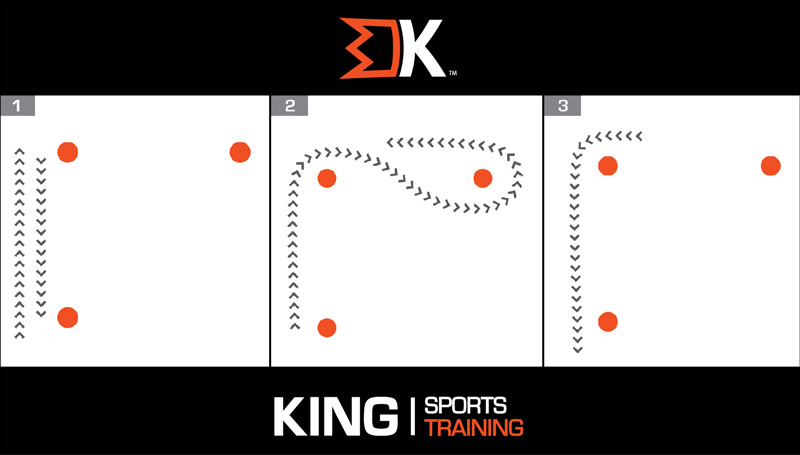
When conducting speed training drills, it’s essential to anticipate and address potential challenges that may hinder performance. Here’s a comprehensive guide to drill troubleshooting, covering common obstacles, solutions, and drill adjustments.
Identifying Common Challenges
- Poor form:Incorrect technique can lead to reduced speed and increased risk of injury.
- Lack of intensity:Drills performed at insufficient intensity won’t yield optimal results.
- Inadequate recovery:Insufficient rest between drills can hinder performance.
- Limited mobility:Restricted range of motion can impede speed development.
- Overtraining:Excessive training volume or intensity can lead to fatigue and reduced performance.
Overcoming Challenges
To overcome these challenges, consider the following solutions:
- Improve form:Break down drills into smaller steps and focus on correct technique. Utilize mirrors or video recording for self-assessment.
- Increase intensity:Gradually increase the speed, distance, or resistance of drills as fitness improves.
- Optimize recovery:Allow adequate rest between drills and training sessions to facilitate muscle recovery.
- Enhance mobility:Incorporate dynamic stretching and flexibility exercises into warm-ups and cool-downs.
- Manage training load:Monitor training volume and intensity to prevent overtraining. Adjust the program as needed.
Adjusting Drills for Performance Issues
In addition to general solutions, specific drill adjustments can address performance issues:
| Challenge | Solution | Drill Adjustment |
|---|---|---|
| Poor acceleration | Improve starting technique | Use a starting block or focus on explosive movements |
| Slow top speed | Enhance stride length and frequency | Incorporate drills with increased stride length or cadence |
| Reduced endurance | Increase training volume gradually | Start with shorter distances or intervals and gradually increase |
| Limited agility | Improve coordination and body control | Incorporate drills that require quick changes of direction or footwork |
Additional Troubleshooting Tips
- Observe athletes carefully:Pay attention to their movements and identify areas for improvement.
- Communicate effectively:Provide clear instructions and feedback to athletes.
- Stay informed:Keep up-to-date on the latest research and techniques in speed training.
- Seek professional guidance:Consult with a qualified coach or physical therapist if challenges persist.
Last Word
In conclusion, speed training drills are a powerful tool for athletes of all levels to enhance their speed and athletic performance. By incorporating these drills into your training regimen and following the guidelines Artikeld in this guide, you can unlock your full speed potential and achieve your fitness goals.
General Inquiries
What are the benefits of speed training drills?
Speed training drills can improve various aspects of speed, including acceleration, top-end speed, and speed endurance. They can also enhance agility, coordination, and power.
How often should I perform speed training drills?
The frequency of speed training drills will vary depending on your fitness level and goals. However, it’s generally recommended to incorporate speed drills into your training 1-3 times per week.
Can I perform speed training drills on my own?
Yes, you can perform many speed training drills on your own. However, it’s important to ensure you’re using proper form and technique to minimize the risk of injury.
Leave a Reply